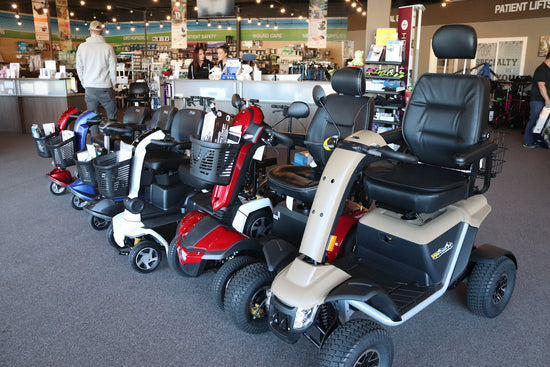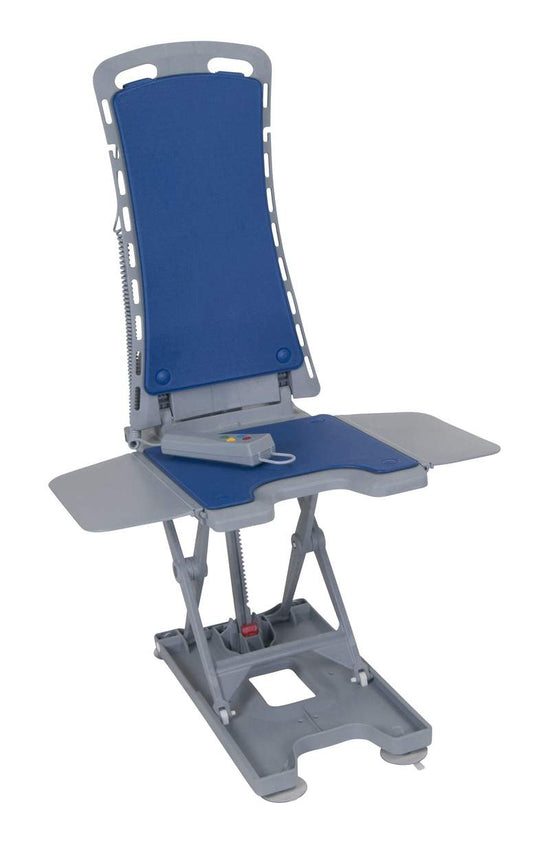Ensuring safety and accessibility in the bathroom is paramount, especially for older adults. Modifying your bathroom can prevent accidents, increase independence, and provide peace of mind for both users and caregivers.
This article will delve into effective strategies and modifications to enhance bathroom safety and accessibility. From installing grab bars and non-slip flooring to optimizing layout and lighting, we’ll cover practical solutions that make daily routines easier and more secure.
The Importance of Bathroom Safety for Older Adults
Bathroom safety is a crucial concern for older adults, given the high risk of slips, falls, and injuries in this space. Ensuring a safe bathroom environment can significantly enhance independence and quality of life, while also reducing the likelihood of accidents and hospital visits.
Falls are the leading cause of injury among older adults, and bathrooms pose particular hazards due to wet and slippery surfaces. Installing non-slip mats in the shower and on the floor can help prevent these dangerous slips. Additionally, grab bars strategically placed around the toilet and shower area provide essential support and stability, making it easier to move safely and confidently.
Another vital modification is improving lighting. Adequate illumination eliminates shadows and enhances visibility, ensuring that older adults can see and navigate their surroundings clearly. Motion-sensor lights can be particularly beneficial, providing instant light without the need to fumble for switches.
Adjustable-height showerheads and handheld sprayers can make bathing easier and safer, accommodating varying mobility levels. Similarly, installing a shower chair or bench allows for seated bathing, reducing the risk of falls and making the process less strenuous.
Temperature regulation is also essential. Anti-scald devices can prevent burns by maintaining a safe water temperature, which is especially important for those with decreased sensitivity.
Optimizing Bathroom Layout for Accessibility
Optimizing your bathroom layout for accessibility is essential for enhancing safety and convenience, particularly for older adults. A well-designed bathroom can significantly reduce the risk of falls and make daily routines easier to manage. Here are key strategies to consider:
Space and Layout
- Clear Pathways: Ensure there is ample space to move around freely. Remove any obstacles and keep pathways clear to accommodate mobility aids like walkers or wheelchairs.
- Wide Doorways: Install doorways that are at least 32 inches wide to allow easy access for wheelchairs and walkers. Consider using pocket doors or swinging doors that open outward for more space.
Fixtures and Fittings
- Raised Toilet Seats: Use raised toilet seats to make sitting down and standing up easier. Add sturdy grab bars near the toilet for additional support.
- Walk-in Showers: Replace traditional bathtubs with walk-in showers that have low or no thresholds. Install grab bars and a built-in bench for added safety.
- Non-Slip Flooring: Use non-slip tiles or mats to prevent falls. Ensure that the flooring is even and free of trip hazards.
Safety Enhancements
- Grab Bars: Install grab bars in strategic locations, such as near the toilet, shower, and bathtub. These provide crucial support and stability.
- Handheld Showerheads: Handheld showerheads offer greater control and flexibility, allowing users to bathe while seated.
- Adequate Lighting: Ensure the bathroom is well-lit to improve visibility. Use motion-sensor lights or nightlights for additional safety during nighttime use.
By focusing on these essential modifications, you can create a safer and more accessible bathroom environment for older adults. For expert advice and high-quality products tailored to your specific needs, consult Everything Medical. Their team can help you transform your bathroom into a safe and comfortable space.
Installing Grab Bars and Handrails
Installing grab bars and handrails in the bathroom is a crucial step in enhancing safety and accessibility, especially for older adults. These supportive fixtures provide stability and help prevent falls, making the bathroom a safer environment. Here are key considerations for effective installation:
Placement and Types
- Shower and Bathtub: Install grab bars inside and just outside the shower or bathtub to assist with entering and exiting. Vertical bars near the entrance and horizontal bars along the walls can provide comprehensive support.
- Toilet Area: Place grab bars on both sides of the toilet to aid in sitting down and standing up. A combination of vertical and angled bars can offer optimal support.
- Near Sinks: Adding handrails near sinks can help users maintain balance while washing hands or brushing teeth.
Installation Tips
- Proper Anchoring: Ensure grab bars are securely anchored to wall studs or use specialized wall anchors designed for heavy loads. This guarantees they can support the user’s weight.
- Height Consideration: Position grab bars at a height that is comfortable and accessible for the user. Typically, bars are installed 33-36 inches from the floor.
- Non-Slip Grip: Choose grab bars with a textured surface to prevent slipping, especially when wet. Stainless steel or durable plastic options are both effective.
Additional Features
- Integrated Designs: Some grab bars come with additional features like built-in shelves or towel racks, offering both functionality and convenience without compromising safety.
- Adjustable Options: Consider adjustable grab bars that can be adapted to the user’s changing needs over time.
By thoughtfully installing grab bars and handrails, you can significantly reduce the risk of accidents and enhance bathroom accessibility for older adults. For expert guidance and a range of high-quality products, consult Everything Medical. Their team can help you find the best solutions tailored to your specific needs.
Choosing Non-Slip Flooring Solutions
Selecting the right non-slip flooring solutions is essential for enhancing bathroom safety, particularly for older adults. Slippery surfaces can lead to dangerous falls, so it's important to choose materials that provide adequate traction. Here are key considerations and options for non-slip flooring:
Key Considerations
- Texture and Grip: Look for flooring materials with a textured surface that provides grip even when wet. This helps prevent slipping and ensures stability.
- Ease of Maintenance: Choose flooring that is easy to clean and maintain. Bathrooms are prone to moisture and spills, so the material should resist mold and mildew.
- Comfort: Ensure the flooring is comfortable underfoot. Soft or cushioned materials can provide additional comfort and reduce the impact on joints.
Flooring Options
- Non-Slip Tiles
- Description: Non-slip tiles are designed with a textured surface to enhance grip. They come in various materials like ceramic, porcelain, and stone.
- Advantages: Durable, easy to clean, and available in numerous designs and colors to match your bathroom decor.
- Considerations: Ensure the tiles have a high slip-resistance rating, typically indicated by a coefficient of friction (COF) rating.
- Vinyl Flooring
- Description: Vinyl flooring is a popular choice for bathrooms due to its water resistance and versatility. Non-slip vinyl options are available with textured surfaces.
- Advantages: Affordable, easy to install, and comfortable underfoot. It also comes in a variety of styles, including those that mimic wood or stone.
- Considerations: Ensure the vinyl has a non-slip coating to maximize safety.
- Rubber Flooring
- Description: Rubber flooring provides excellent traction and cushioning, making it a safe and comfortable option for bathrooms.
- Advantages: Highly durable, water-resistant, and comfortable. It is also available in interlocking tiles or sheets for easy installation.
- Considerations: Rubber flooring may have a distinct odor initially and can be more expensive than other options.
By choosing the right non-slip flooring solution, you can significantly reduce the risk of falls and create a safer bathroom environment. For expert advice and high-quality products tailored to your needs, consult Everything Medical. Their team can help you find the best flooring options to enhance both safety and accessibility in your bathroom.
Essential Bathroom Safety Aids
Implementing essential bathroom safety aids is critical for enhancing both safety and accessibility, especially for older adults. These aids provide stability, support, and ease of use, helping to create a secure environment. Here are key bathroom safety aids to consider:
1. Transfer Benches
- Description: Transfer benches are designed to bridge the gap between the outside and inside of the bathtub or shower, allowing users to sit and slide safely without lifting their legs over the tub's edge.
- Benefits: They reduce the risk of falls during transfers and are particularly helpful for individuals with limited mobility or balance issues.
2. Bath Lifts
- Description: Bath lifts are motorized seats that lower and raise users in and out of the bathtub. They are controlled via a waterproof remote.
- Benefits: Bath lifts provide a safe way to enjoy a bath without the need for strenuous movements, making bathing more accessible and comfortable.
3. Bathtub Safety Rails
- Description: Bathtub safety rails attach securely to the side of the tub, offering a stable handhold for users entering or exiting the bath.
- Benefits: These rails provide crucial support and stability, greatly reducing the risk of slips and falls.
4. Grab Bars
- Description: Grab bars are installed on walls near the shower, bathtub, and toilet to provide steady support.
- Benefits: They help users maintain balance and prevent falls. Properly installed grab bars are a cornerstone of bathroom safety.
5. Raised Toilet Seats
- Description: Raised toilet seats increase the height of the toilet, making it easier to sit down and stand up.
- Benefits: These seats reduce strain on the knees and hips, providing a safer and more comfortable toileting experience.
6. Handheld Shower Sprays
- Description: Handheld shower sprays can be detached from the wall mount and used while seated.
- Benefits: They offer greater control and flexibility, allowing users to direct water where needed without moving around the shower or tub.
7. Commodes
- Description: Commodes are portable toilet solutions that can be placed near the bed or in the bathroom as needed.
- Benefits: They offer a convenient and safe toileting option for those who cannot easily reach the bathroom, preventing accidents and promoting independence.
Implementing these essential bathroom safety aids can significantly enhance safety and accessibility for older adults. For expert guidance and a wide selection of high-quality products, consult Everything Medical. Their knowledgeable team can help you choose the best aids tailored to your specific needs, ensuring a safer and more comfortable bathroom environment.




